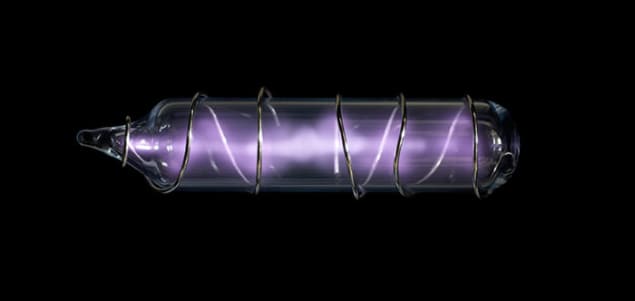
A report by three US societies has highlighted the threat of rising helium prices, finding that some institutions are paying two-and-a-half-times more for liquid helium than they did in 2009. The organizations – the American Physical Society, the American Chemical Society and the Materials Research Society – have created the “Conserve Helium” website to give researchers information on techniques that could reduce their helium usage and develop new helium-saving technologies.
Market forces
Research accounts for about 6% of the global helium market, yet the amount of helium available worldwide is limited. That shortage could worsen, owing to the impending closure of the US Federal Helium Reserve, which the Helium Stewardship Act of 2013 insists must shut by September 2021. Market forces will then control the element’s price, to the likely disadvantage of research customers. “It was clear there was going to be a problem down the road because of depletion of the helium reserve,” says low-temperature physicist William Halperin of Northwestern University, US, who sat on the 11 strong committee that wrote the report.
We want other federal agencies to realize that helium is non-renewable and has an uncertain future
Simon Bare, SLAC National Accelerator Laboratory
While the report by the three societies comes at a time when the price of crude helium has dropped slightly, that fall is not enough to offset the huge increases that have occurred in recent years. These rises have been worsened by the lack of bargaining power that small research institutions have. “By requiring scientists to pay such exorbitant prices for helium, funding is being diverted from other crucial priorities, such as training the next generation of American scientists,” the report asserts.
Helium broker
The panel recommends that the US government should provide guidance to agencies about conserving helium and build on an existing collaboration in which the Defense Logistics Agency acts as a “broker” to help academic institutions negotiate lower prices and tighter delivery schedules for helium. The report also calls on Congress to use some revenues from the Federal Helium Reserve to help researchers pay for equipment to cut helium consumption and for scientific societies to help academic researchers to transition to such equipment too.
In addition, the report also takes aim at the Bureau of Land Management (BLM), saying that it should develop regulations for selling helium to researchers who receive government grants. Indeed, the BLM has already been directed by the House of Representatives Committee on Natural Resources to fulfil the report’s relevant recommendations. “We want other federal agencies to realize that helium is non-renewable and has an uncertain future,” says Simon Bare, from the SLAC National Accelerator Laboratory, who co-chaired the panel that wrote the report. “If more groups at all sorts of institutions in the US reduce their use of helium by recapturing and recycling, it’s a good thing.”
The report, Responding to the U.S. Research Community’s Liquid Helium Crisis, can be found on the APS website.



